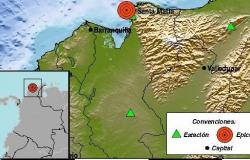Córdoba in 15 years: the most common home will be that of people who live aloneAJ GONZÁLEZ
The Córdoba of the future will have more homes, to exceed 335,000, and the most repeated trend will be that of people living alone. This is highlighted by theHousehold projection published this Monday by the National Institute of Statistics (INE)which reflects the result that the prolongation of current demographic trends on the number of households 15 years from now, that is, 2039.
According to the INE, In 2039, the most common form of coexistence in the province of Córdoba will be the absence of coexistence itself., with the majority of households being single-person. Part by part. Currently in Córdoba there are 306,418 homes and it is expected that until 2039 they will grow by more than 9% standing at 335,140.
Two people, the most common model today
Right now, the most common coexistence model is that of two peopleThat is, two-person households are the most numerous today. Of the more than 306,000 homes in Córdoba, 89,414 are made up of two people. This two-person model will keep growing 15 years from now. It will increase by about 23% until reaching 109,744 households in 2039 that are made up of two people.
However, no model will grow as much as the one-person model., which is currently number two on the list. Now there are 82,531 Cordoba homes where only one person lives, by 2039 there will be almost 116,000, experiencing exponential growth of more than 40%.
Large households are decreasing
At the same time that this happens, as the number of smaller homes grows, the model in which more people live together will decrease. Households where three people live, which now number 61,929, will increase to just over 57,000 in 2039.suffering a decrease of 8%.
But even more pronounced will be the drop in the largest households, those with four or more cohabitants.. Those are now 72,553 (more than those of three people) and in 2039 they will plummet almost 28% to be 52,319, remaining last on the representation list.
Average
What all this will cause is that, obviously, the average number of inhabitants of a home will also fall. It will do so by almost 12%, as it will go from the current 2.5 members to 2.21.





